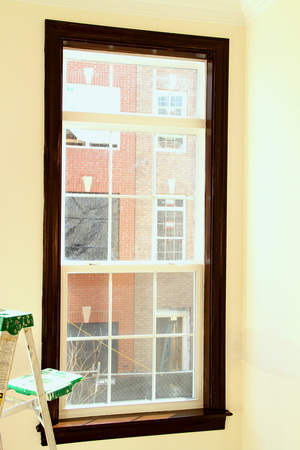How to stage a house for sale in the Washington, DC area
The Washington, DC real estate market is an exciting roller coaster of ups and downs. But regardless of whether you are trying to sell your house at the peak of one of the area’s notorious real estate bubbles, or during the long, slow periods that stretch between, you will be facing a scene of intense competition. There are literally hundreds of thousands of homes in the DC area, many of them just like yours, so potential buyers will be coming in with a wide list of options to consider. Selling a home in this area therefore involves going the extra mile to present your home as uniquely desirable, above and beyond any of the specs about it that can be put down on paper.
Presenting a home in order to sell it most effectively is a process known as “staging”. When you stage a home, you cast your net as wide as possible, setting it up to appeal to the largest possible audience. That means that you don’t set it up the way you like it – you set it up the way anyone might like it. The classic formula for effective staging involves four critical steps:
- De – clutter
- De – purate
- De – personalize
- De – corate
At each step, your home transforms from an idiosyncratic expression of your unique lifestyle, to a blank, shining template upon which any potential buyer could project his dreams.
De-clutter. Most of the loose objects in your house are aesthetically distracting. They pull attention away from the space and the architecture, and direct it toward whatever activity you might use that object for. For the prospective buyer who just happens to share your lifestyle and hobbies, the clutter might distract them in a positive way, but for the majority of the public it will simply make them feel crowded and less at home. Since you want to appeal to the highest number of people, all clutter needs to be removed from the space, or stored out of sight, when a house is being staged. And don’t forget your exterior! Garden clutter is some of the most toxic clutter to your sale, because it negatively impacts your curb appeal.
De-purate is a fancy word for “clean”. Once all of the clutter has been removed from the space, all of the remaining surfaces need to be visibly cleansed of the wear and tear that you have inflicted upon it during your years in the space. “Clean” means “new” in most people’s eyes, and “new” means “likely to be in good shape and last a long time,” which is the ideal state for a purchase. During this stage in the process, if you come across a part of your house that is in particularly bad shape – peeling paint, excessive staining, etc. – you might want to consider replacing it or getting some serious work done. Money spent improving a home for sale is often made back in the sale itself.
De-personalize. Now that the space is clean and open, it is time to make it look as generic as possible. That means removing any of the personal touches that you so proudly displayed while living in the space; spoon collections, quirky art, and yes – family pictures. Even if your signature on the space is tasteful, anything that marks the home as yours is going to make it more difficult for prospective buyers to see it as theirs.
De-corate. Finally, you need to decorate the space, making it universally appealing. The look you are trying to achieve is spacious, sturdy, and harmonious – not embodying any particular style. Repainting is often an integral part of this step in the staging process, because color is a powerful tool in maximizing visual space and harmony. Choose light colors with tasteful accents, and accessorize with intelligently placed mirrors, plants (potted plants work well for exteriors as well), and simple, minimal works of art.
Once you have completed these four steps, the stage in your house has now been set to sell, and you can open your doors to the public with confidence and pride.
